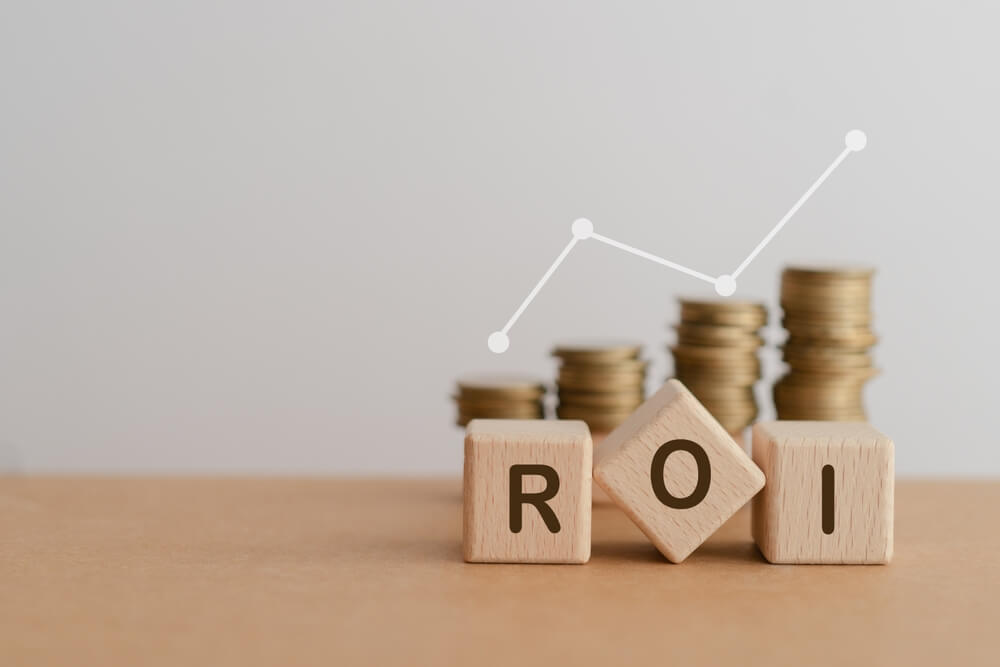
Ways SaaS Analytics Can Boost Your Digital Marketing ROI
In today’s rapidly changing digital landscape, maximizing marketing return on investment (ROI) leads to sustainable growth. Software-as-a-service (SaaS) analytics platforms offer comprehensive measurements and insights to augment marketing strategies.
These platforms use cutting-edge technology to gather, analyze, and interpret data. The information gives businesses a nuanced understanding of their marketing efforts’ performance across diverse channels.
This guide shows how SaaS analytics enhance digital marketing ROI:
 SaaS platforms offer diverse analytics crucial for enhancing digital marketing efforts. Here are the most common types.
SaaS platforms offer diverse analytics crucial for enhancing digital marketing efforts. Here are the most common types.
 Integrating SaaS analytics within digital marketing strategies is crucial for maximizing ROI. Combining data from various channels provides a holistic view of the marketing ecosystem, allowing a deeper understanding of audience behaviors.
Data-backed real-time optimizations and agile decisions drive improvements in strategies and content. In particular, they enhance engagement and conversions. They also create a data-driven culture, empowering budget allocation and tailored messaging. These increase precision in marketing efforts and ROI.
Here are strategies for integrating SaaS analytics for higher returns:
Integrating SaaS analytics within digital marketing strategies is crucial for maximizing ROI. Combining data from various channels provides a holistic view of the marketing ecosystem, allowing a deeper understanding of audience behaviors.
Data-backed real-time optimizations and agile decisions drive improvements in strategies and content. In particular, they enhance engagement and conversions. They also create a data-driven culture, empowering budget allocation and tailored messaging. These increase precision in marketing efforts and ROI.
Here are strategies for integrating SaaS analytics for higher returns:
- Valuable analytics for digital marketing
- Integration for higher ROI
- Professional assistance from a digital strategy consultant
Watch this video to find out more about how Digital Authority Partners can create a great marketing strategy for you!
Valuable Analytics for Digital Marketing
 SaaS platforms offer diverse analytics crucial for enhancing digital marketing efforts. Here are the most common types.
SaaS platforms offer diverse analytics crucial for enhancing digital marketing efforts. Here are the most common types.
1. Website Traffic and User Behavior
SaaS analytics track website traffic that provides insights into visitor behavior. These include page views, time spent on the site, and navigation paths. Understanding user behavior helps optimize website design and content to improve engagement and conversion rates. Monitoring website traffic and user behavior is crucial in optimizing ROI in SaaS digital marketing. Here are tips digital strategy consultants use to measure and monitor these aspects:- Use analytics tools such as Google Analytics to track website traffic, user interactions, and behavior patterns. Set up goals, conversion funnels, and event tracking to monitor specific user actions.
- Conduct A/B tests to compare versions of webpages, calls to action (CTAs), or content layouts to determine what resonates best with the audience.
- Map out the user journey and behavior flow on the website to understand users’ paths. Identify high-traffic pages, common navigation routes, and points where users tend to exit.
- Gather direct insights by implementing user surveys, feedback forms, or on-site chatbots. Engage with users to understand their needs, pain points, and preferences.
- Define and regularly monitor key performance indicators (KPIs) such as conversion rates, bounce rates, average session duration, and customer acquisition costs.
- Identify trends, detect anomalies, and make data-driven decisions. Use this information to refine marketing strategies, allocate budgets more effectively, and focus on high-ROI channels or campaigns.
2. Conversion and Funnel Analysis
These analytics track conversions and analyze users’ steps before completing a desired action (e.g., purchasing or signing up for a newsletter). The information is crucial for optimizing marketing funnels to enhance conversion rates. Measuring and monitoring conversion and funnel analysis in SaaS digital marketing is essential for improving ROI. These strategies effectively track and optimize these aspects:- Define conversion goals for the SaaS product or service (e.g., sign-ups, subscriptions, purchases). Identify the various conversion funnel stages, such as awareness, consideration, and decision.
- Set up conversion tracking using Google Analytics. Implement goal tracking, event tracking, and ecommerce to monitor user actions at different funnel stages.
- Analyze conversion funnel metrics regularly. Assess the conversion rates at each funnel stage to identify potential bottlenecks or areas that require optimization.
- Conduct A/B tests on various elements within the funnel. These include landing pages, call-to-action buttons, form designs, and checkout processes. Experiment with different variations to determine which elements yield higher conversion rates.
- Implement retargeting or remarketing campaigns to re-engage users who showed interest but did not convert. Use tools such as Google Ads, Facebook Pixel, or LinkedIn Ads to target these users with personalized messages or offers.
3. Audience Segmentation and Demographics
SaaS platforms gather data to segment audiences based on demographics, interests, and behaviors. Segmentation enables targeted and personalized marketing campaigns, ensuring messages resonate with specific audiences. Consider the following techniques to effectively measure and monitor audience segmentation and demographics:- Employ analytics tools such as Google Analytics, Facebook Insights, or customer relationship management platforms to gather detailed demographic data.
- Create personalized landing pages or user journeys for specific demographic segments. Use marketing automation platforms to customize content based on demographics.
- Design and conduct surveys or use feedback forms to collect first-party data. Ask questions related to demographics, preferences, challenges, or buying behaviors.
- Leverage social media analytics and targeting options on Facebook, LinkedIn, or Twitter platforms.
- Segment email marketing lists based on demographic data and behavioral patterns. Email marketing tools allow dynamic content insertion based on audience segments.
- Consider email remarketing to target audiences interested in your SaaS products or services.
- Personalize email content, offers, and CTAs according to demographics to enhance engagement and conversions.
4. Content Performance Metrics
Analytics assess the performance of content marketing efforts, including blog posts, videos, and social media. Metrics such as engagement rates, shares, and click-through rates (CTRs) help gauge content effectiveness and refine future content strategies. Measuring and monitoring content performance metrics maximizes ROI in SaaS digital marketing. Remember these techniques to track and optimize content performance:- Identify and define key metrics aligned with content marketing goals. These include page views, time on the page, bounce rates, social shares, conversion rates, and leads generated from content.
- Use Google Analytics, Adobe Analytics, or content management system analytics to track content performance.
- Conduct A/B tests on different content elements such as headlines, visuals, CTAs, or content formats (e.g., video versus text). Test variations to discover what resonates best with the audience and drives higher engagement or conversions.
- Analyze content performance in search engine optimization (SEO) by monitoring keyword rankings, organic search traffic, and CTRs.
- Monitor audience engagement through comments, shares, and feedback on content across various platforms.
5. Email Marketing Metrics
SaaS analytics platforms track open, CTRs, and conversion rates for email campaigns. These insights optimize email content, timing, and segmentation for more effective communication with subscribers. Consider these strategies to effectively measure and monitor email marketing metrics and increase ROI in SaaS digital marketing:- Identify and define key metrics aligned with email marketing goals. Examples are open rates, CTRs, conversion rates, bounce rates, unsubscribe rates, and overall revenue generated from email campaigns.
- Use email marketing platforms such as HubSpot to boost revenue with detailed analytics.
- Measure the effectiveness of audience segmentation and personalization strategies in email campaigns. Analyze the performance metrics across different segments (based on demographics, behavior, or engagement levels).
- Test various elements within email campaigns, such as subject lines, email content, CTAs, visuals, or send times. Use different variations to understand what resonates best with the audience and drives higher engagement or conversions.
- Monitor the customer journey from email opens to conversions on the SaaS platform. Implement tracking mechanisms to attribute conversions to specific email campaigns or sequences.
6. Social Media Engagement and Reach
Analytics tools measure social media performance. They track likes, shares, comments, and reach across various platforms. This data helps evaluate social media campaign effectiveness and guides adjustments to improve search engine optimization and engagement. Consider implementing the following to measure and monitor social media engagement and reach for increasing ROI:- Identify and define key metrics aligned with social media marketing goals. These include engagement rate, reach, clicks, shares, comments, conversions, and ROI specific to social media campaigns.
- Leverage social media analytics tools from Facebook Insights, Twitter Analytics, LinkedIn Analytics, and Instagram Insights.
- Monitor engagement metrics such as likes, shares, comments, and retweets. Analyze which types of content or posts generate higher engagement rates.
- Track audience interactions and respond promptly to comments or messages to build your community and improve brand perception.
- Measure the reach and impressions of social media content to understand the number of people who see your posts and the frequency of brand exposure.
- Experiment with which content types or posting schedules lead to broader reach and increased visibility among the target audience.
- Analyze sentiments or use social listening tools to understand conversations about the brand, industry, or competitors on social media.
7. Advertising ROI and Performance
SaaS analytics offer detailed insights into the performance of paid advertising campaigns. It measures metrics such as click-through rates, cost per click, and return on ad spend (ROAS). This information helps optimize ad targeting and budget allocation. Harnessing these diverse types of analytics helps you make informed decisions, refine digital marketing strategies, allocate resources, and drive better results in your online marketing endeavors. Here are tips for using SaaS analytics to measure advertising ROI and performance:- Establish specific goals and KPIs aligned with advertising campaigns, such as increased website traffic, lead generation, or sales conversions.
- Use attribution models available in SaaS analytics tools to track and attribute conversions or actions to specific advertising channels or campaigns.
- Monitor the cost per acquisition (CPA) and ROAS for advertising campaigns. Calculate the cost of acquiring a customer through each campaign and compare it against the revenue generated.
- Use SaaS analytics to segment the audience based on various parameters such as demographics, behaviors, or interests. Analyze the performance of ads among different audience segments.
- Perform A/B tests with different ad creatives, messaging, or targeting parameters. Use SaaS analytics to compare the performance of different variations and optimize ads based on these insights.
Integrating with Digital Marketing Strategies for Higher ROI
 Integrating SaaS analytics within digital marketing strategies is crucial for maximizing ROI. Combining data from various channels provides a holistic view of the marketing ecosystem, allowing a deeper understanding of audience behaviors.
Data-backed real-time optimizations and agile decisions drive improvements in strategies and content. In particular, they enhance engagement and conversions. They also create a data-driven culture, empowering budget allocation and tailored messaging. These increase precision in marketing efforts and ROI.
Here are strategies for integrating SaaS analytics for higher returns:
Integrating SaaS analytics within digital marketing strategies is crucial for maximizing ROI. Combining data from various channels provides a holistic view of the marketing ecosystem, allowing a deeper understanding of audience behaviors.
Data-backed real-time optimizations and agile decisions drive improvements in strategies and content. In particular, they enhance engagement and conversions. They also create a data-driven culture, empowering budget allocation and tailored messaging. These increase precision in marketing efforts and ROI.
Here are strategies for integrating SaaS analytics for higher returns:
- Outline specific goals and KPIs aligned with marketing strategies, such as conversion rates, customer acquisition costs, or lifetime value.
- Invest in robust SaaS analytics platforms that aggregate data from various marketing channels (websites, social media, and email campaigns). Tools such as Google Analytics, HubSpot, or Adobe Analytics offer comprehensive insights for a holistic view of marketing performance.
- Integrate data from different marketing channels into a unified dashboard. It promotes a comprehensive analysis of user behavior across multiple touchpoints and facilitates better-informed decision-making and optimizations.
- Monitor and analyze data to identify trends, patterns, and areas for improvement.
Getting Professional Assistance from a Digital Strategy Consultant
Managing digital marketing campaigns alongside SaaS analytics is complex because of the multifaceted nature of multichannel data collection, analysis, and implementation. Integrating analytics and marketing strategies requires technical expertise, a deep understanding of data, and knowledge of the specific functionalities of diverse SaaS analytics tools. All of this must be combined to create a strategy encompassing:- Data aggregation and interpretation: Combining data from multiple sources, understanding correlations, and extracting actionable insights require data analysis and interpretation expertise.
- Technical integration: Integrating diverse SaaS analytics platforms with various marketing tools, ensuring data accuracy, and setting up proper tracking mechanisms demand technical proficiency.
- Continuous optimization: Concurrently managing campaigns and analytics tools involves constant monitoring, testing, and optimization based on data insights. All these tasks require ongoing dedication and expertise.
Summing Up
Amplifying digital marketing ROI through SaaS analytics involves using powerful data insights to enhance marketing strategies and drive better outcomes. Integrating SaaS analytics with digital marketing gives you a comprehensive view of your audience, identifies trends, optimizes real-time campaigns, and creates a data-driven culture. Marketers employ comprehensive analytics tools, A/B testing, refined audience segmentation, and performance metric tracking to personalize content and make informed decisions. These factors also optimize resource allocation for maximizing ROI. Find out how SaaS analytics can boost your returns. Contact Digital Authority Partners for top digital strategy consultant strategies and marketing success.Want To Meet Our Expert Team?
Book a meeting directly here



